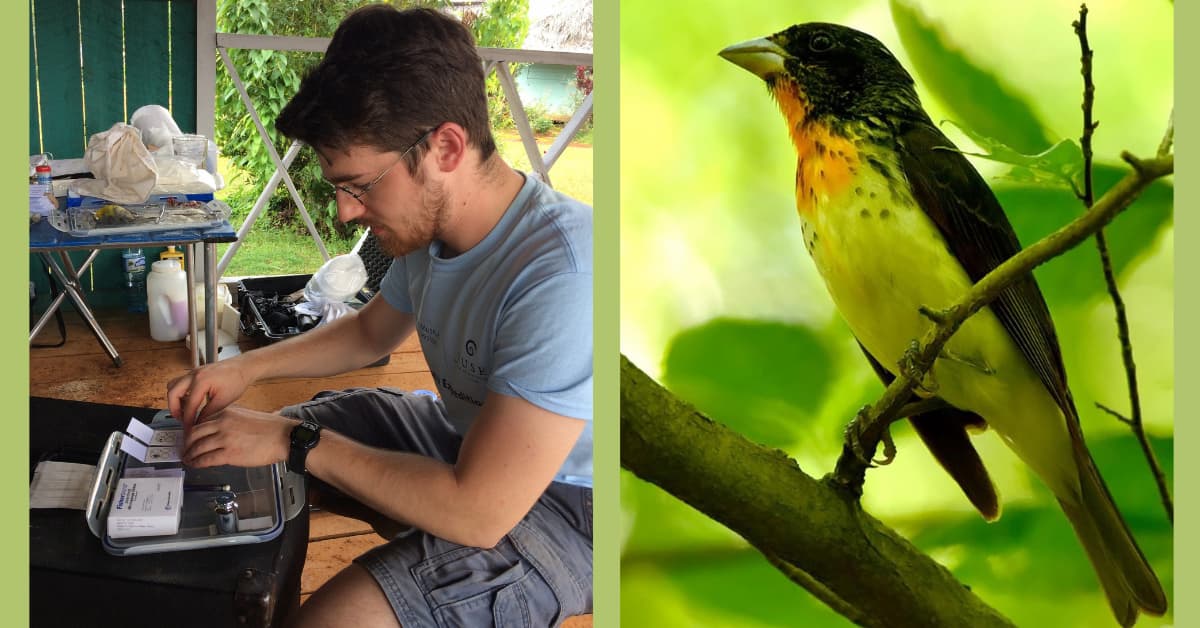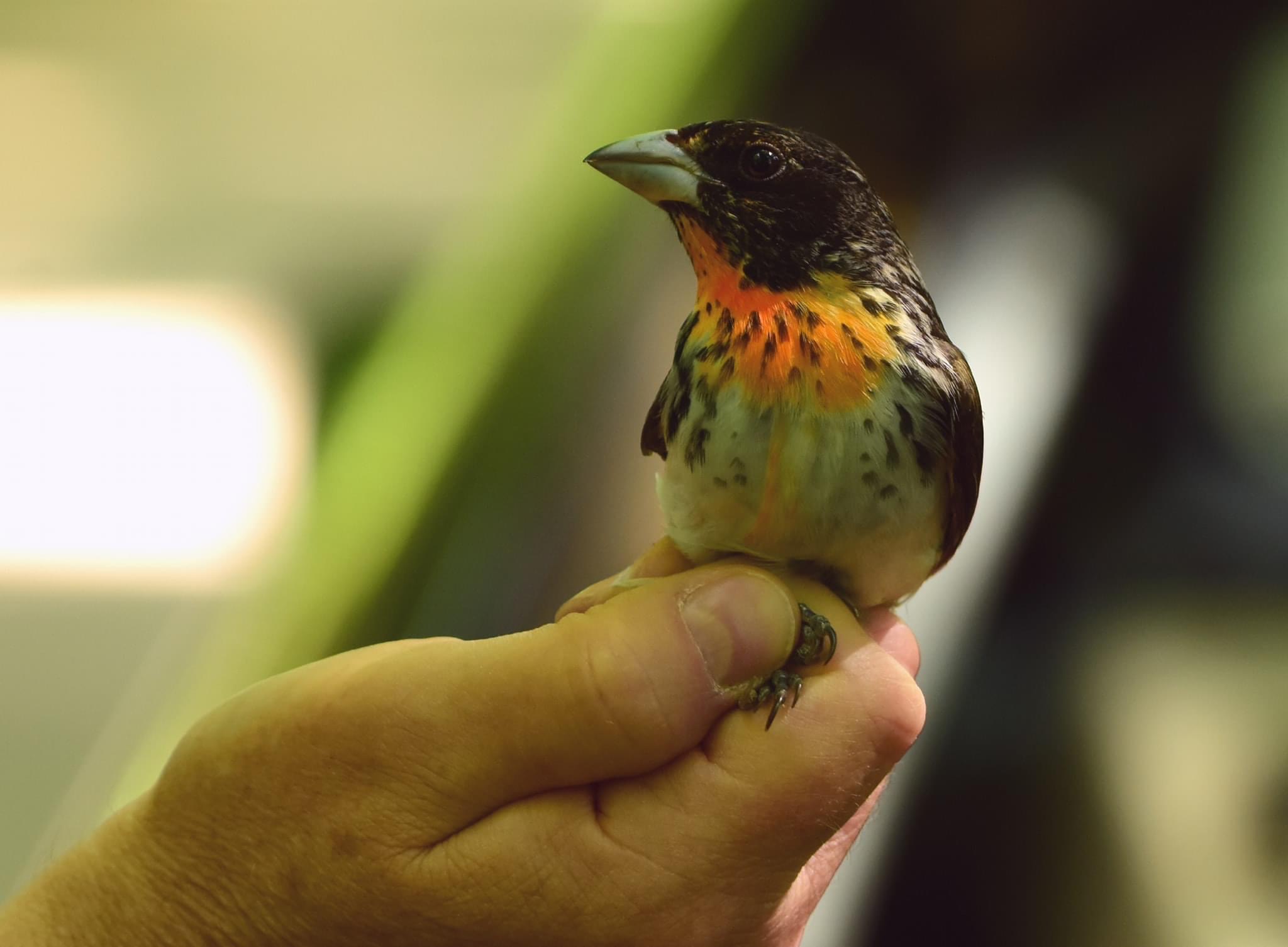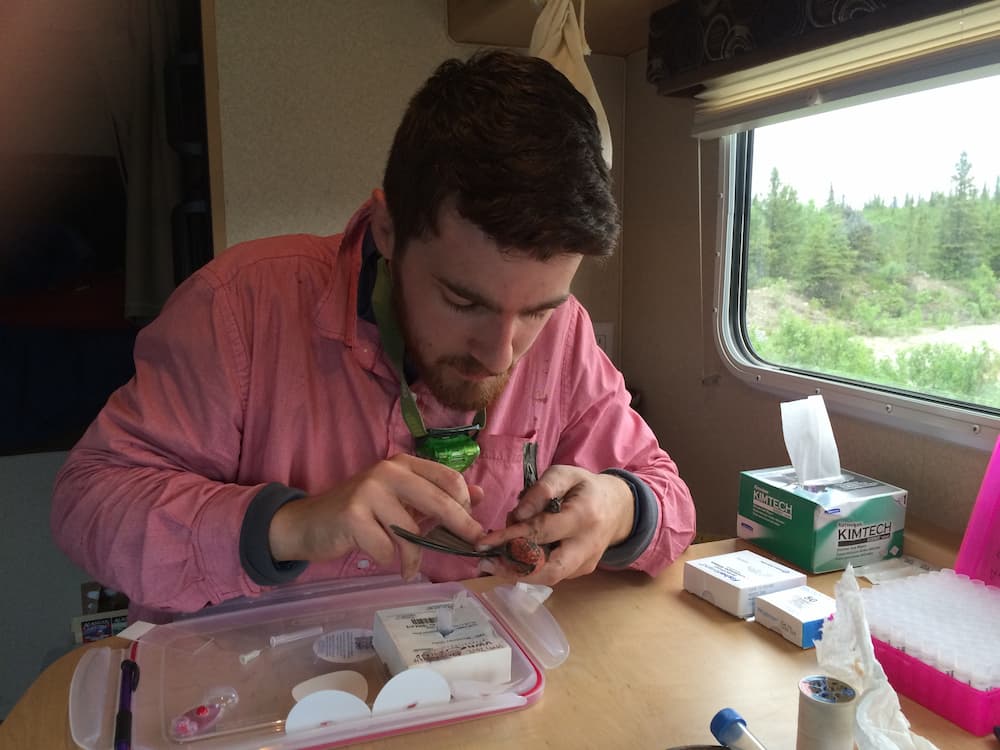Faculty Profile: A Conversation with Dr. Spencer Galen

Assistant Professor of Biology, Spencer Galen, Ph.D, instructs University students in the classroom, lab and field. In addition to his academic work, Dr. Galen participates in scientific research regarding ornithology, the study of birds, and parasitology, the study of parasites. Recently, DNA he sequenced helped solve a biological mystery. He explains how the collaboration identifies a "strange-looking bird" (spotted in Pennsylvania!) as a species unlike any known to science.
When he's not instructing Royals in General Biology I and II, General Physiology Laboratory, and Parasitology, he's guiding them toward forward-thinking facets of the field, including statistics and bioinformatics, which he describes as "powerful tools that scientists increasingly rely on to understand their data".
Today Dr. Galen discusses his contributions as co-author of "Genetic confirmation of a hybrid between two highly divergent cardinalid species: A rose-breasted grosbeak (Pheucticus ludovicianus) and a scarlet tanager (Piranga olivacea)," shown, below.

What inspired you to research this topic?
"The story behind my contribution to this study is actually quite an odd one, but one that speaks to the collaborative nature of science. As many people know the news or from popular media, DNA can be used to identify an unknown person of interest whether it may be a suspect in a criminal case or a long-lost relative. We can also use DNA to solve biological mysteries, such as identifying the parents of a hybrid organism.
Several years ago a strange-looking bird unlike any species known to science was seen right here in Pennsylvania, and a team of researchers sought to study its DNA to try to determine if it was a hybrid. Coincidentally, I had previously sequenced the DNA of a number of bird species from the eastern U.S.A., and my DNA data was used to solve the hybrid mystery – as it turned out, the bird was a hybrid of two very distantly related bird species (the rose-breasted grosbeak and scarlet tanager, believed to have last shared a common ancestor 10 million years ago)."
What theory did your research team have as to how a hybrid formed under natural conditions in the wild? What techniques were used to solve the mystery of the bird’s origin?
"The research team that I was involved with used a combination of evidence from DNA, physical appearance, and song analysis to determine the parents of the hybrid bird. While the song of the bird was similar to one of the proposed parental species (scarlet tanager), both the physical appearance and the DNA of the bird appeared to be a perfect mix of the two parents. We really don’t understand the circumstances under which the hybrid formed, but with increasing forest fragmentation and declining songbird populations it may mean that birds are having a harder time finding a mate, possibly making hybridization more likely."
What is something that has surprised you in your research?
"A parasite is any organism that lives in or on a host species and depends on that host species for energetic resources. Parasites are everywhere and are extremely diverse, which makes studying them very rewarding as there is a lot of room for discovery. I am particularly interested in what is called parasite biodiversity, which is broadly thought of as the number of species of parasite and their abundances throughout the world.
The general hypothesis that drives a lot of my research is that parasites are probably even more abundant and diverse than we have previously understood. Using more advanced DNA-based methods my research largely supports this idea, showing that there are likely thousands of undiscovered species of blood parasite that are in need of study."
What do you recommend to someone interested in pursuing a career in your field?
"I probably wouldn’t have liked to hear this advice when I was an undergraduate, but it is advantageous to become skilled with both numbers and computers if you want to work in any biological field. I am referring specifically to the fields of statistics and bioinformatics, which are both powerful tools that scientists increasingly rely on to understand their data.
I don’t think someone interested in ecology and evolutionary biology needs to become an expert statistician or bioinformatician (I am certainly not), but having basic skills in these areas will make you a more versatile scientist who has the ability to transition to a variety of other fields. I recommend taking a least one introductory class in statistics (e.g. Biostatistics offered by the biology department) and computer science, to start building these skills."
What’s next for you in terms of research projects?
"I have many different projects going on that I am excited about! I have students working on projects related to blood parasites in birds from Alaska, blood parasites that infect birds of prey such as eagles and vultures, discovering new species of blood parasites in the eastern U.S., and identifying what animals insect vectors like mosquitoes are feeding on in northeastern PA, among several other projects. I have a talented group of students working on these studies and I have been thrilled to see them develop as scientists."
When did you decide to pursue a career as a researcher and educator?
"I don’t know exactly when I decided that I wanted to be a professor, but I suppose I was always destined to become one because I never considered pursuing a career that wouldn’t allow me to freely explore my interests in science and natural history. As a professor I get to do research with my students on any topic that strikes my interest, which is a special thing about this job that I greatly value.
It is hard to know when your work as an academic is truly making an impact, and so I try to focus on making sure my students are building long-lasting, positive associations with biology, whether it is in the lab or in the classroom. I think getting the next generation excited about biology is probably the most impactful thing that we can do as professors." 
On a Lighter Note...
Dr. Spencer C. Galen earned a doctoral degree in Comparative Biology from the Richard Gilder Graduate School at the American Museum of Natural History in New York City, a Master's in Biology from the University of New Mexico and a Bachelor of Science from the University of Delaware.
Favorite birdsongs?
"Picking my favorite bird song is like trying to pick a favorite child, but I will throw out one that I am particularly fond of – the Veery is a thrush that spends its summers in Pennsylvania forests that has an eerily beautiful song. You can listen to it here: https://www.allaboutbirds.org/guide/Veery/sounds#."
Favorite location for bird watching?
"In the eastern U.S.A. I think that it is hard to beat Cape May, New Jersey for the best bird watching location. It is a small area packed with amazing bird watching spots that span the transition from forest to the ocean. Visit during Spring or Fall and birds are everywhere! It is also a charming little beach town if you need a different reason to visit."






